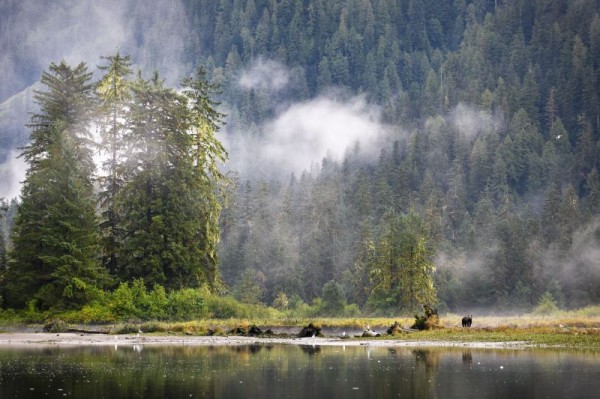The Great Bear rainforest, a place of beauty and wonder
The Great Bear region of British Columbia’s north coast is one of Canada’s ecological treasures. People lucky enough to have visited the rainforest seem transformed by the place. Perhaps that’s because of the abundance of wildlife they spotted – whales, porpoises, salmon, black bears, grizzlies, eagles, sea otters and the iconic white ‘Spirit Bear’ – a creature rarer than the Giant Panda. Or perhaps it’s the extraordinary landscapes, the people and communities that make this place unique.
Here are accounts from two staff members who have been there and back.
Linda Nowlan, Director of Pacific Conservation
“With a salmon in one hand, the grizzly waded into the cold water and swam to the other bank where he settled into an extended breakfast of champions: salmon sushi and more salmon sushi. (Scientific American ran a fascinating four-part series this summer on grizzly bears and their dependence on salmon in the Great Bear region.)
Beckoned by our guides, we loaded the Zodiacs and motored as quietly as possible downstream to continue our bear surveillance. The grizzly watched us, too. Then he slipped into the water and let the current carry him right past our boat. Only his head was above water; his gaze level at the feeding grounds below. And as he slipped by in the rushing water, our eyes met. A moment of wonder. I took it all in – the wide swath of the estuary, the wild rivers and streams funneling into Khutze Inlet, the backdrop of forest and mountains.”
A lone Grizzly bear (Ursus arctos horribilis) dwarfed by surrounding trees and mountains at Khutze Estuary, Great Bear Rainforest, British Columbia, Canada
Jonelle Warren, Executive Assistant and Office Coordinator, Vancouver Office
“While sitting in our Zodiac boats in a downpour of rain, we watched a grizzly and her two cubs on the shoreline, the cubs wrestling with each other, one playfully snatching a freshly caught salmon from mom and tearing off in a hopeful game of chase. Water cascaded over 2000 feet from atop breathtaking bluffs as eagles and gulls flew directly overhead. The setting is almost surreal. There is so much life here and it all depends on the interwoven relationship between land and sea.”
You too can visit the Great Bear this September and support WWF’s conservation work by purchasing a Panda Ball raffle ticket. Click here for details on how you can enter to win a trip for two to the Great Bear.


